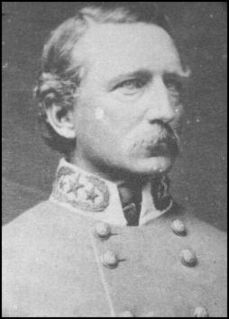
According to Roman tradition, Lucretia, anglicized as Lucrece, was a noblewoman in ancient Rome, whose rape by Sextus Tarquinius (Tarquin) and subsequent suicide precipitated a rebellion that overthrew the Roman monarchy and led to the transition of Roman government from a kingdom to a republic. The incident kindled the flames of dissatisfaction over the tyrannical methods of Tarquin's father, Lucius Tarquinius Superbus, the last king of Rome. As a result, the prominent families instituted a republic, drove the extensive royal family of Tarquin from Rome, and successfully defended the republic against attempted Etruscan and Latin intervention.

The Seneca Falls Convention was the first women's rights convention. It advertised itself as "a convention to discuss the social, civil, and religious condition and rights of woman". Held in the Wesleyan Chapel of the town of Seneca Falls, New York, it spanned two days over July 19–20, 1848. Attracting widespread attention, it was soon followed by other women's rights conventions, including the Rochester Women's Rights Convention in Rochester, New York, two weeks later. In 1850 the first in a series of annual National Women's Rights Conventions met in Worcester, Massachusetts.

Taylor County is a county in the U.S. state of West Virginia. As of the 2010 census, the population was 16,895. Its county seat is Grafton. The county was formed in 1844 and named for Senator John Taylor of Caroline.
Sic semper tyrannis is a Latin phrase meaning "thus always to tyrants". It suggests that bad, but justified outcomes should, or eventually will, befall tyrants.

Lucretia Garfield was the first lady of the United States from March to September 1881, as the wife of James A. Garfield, the 20th president of the United States.

Verginia, or Virginia, was the subject of a story of ancient Rome, related in Livy's Ab Urbe Condita.

A camisole is a sleeveless undergarment or innerwear typically worn by women, normally extending to the waist. The camisole is usually made of satin, nylon, silk, or cotton.

Joseph Brevard Kershaw was a prominent South Carolina planter and slaveholder. He was also a lawyer, judge, and a Confederate general in the American Civil War.

The Rape of Lucretia is an opera in two acts by Benjamin Britten, written for Kathleen Ferrier, who performed the title role. Ronald Duncan based his English libretto on André Obey's play Le Viol de Lucrèce.
Mary Lucretia Creighton was born Mary Lucretia Wareham in Dayton, Ohio. Creighton was a philanthropist who left a bequest of $200,000 in her will to found Creighton University in honor of her husband, Omaha, Nebraska pioneer banker Edward Creighton.

The Story of Virginia, is a painting by the Italian Renaissance painter Sandro Botticelli. It is a tempera on panel and measures 86 cm tall and 165 cm wide. It is currently held by the Accademia Carrara in Bergamo, Italy.
Lucretia is a legendary figure in the history of the Roman Republic.
Daniel McLean was a successful businessman in banking trade who owned one of the earliest sugar refineries in Alexandria, Virginia. He was also a chief benefactor of St. Paul's Episcopal Church in Alexandria, Virginia. McLean's father, Donald McLean, was born in Isle of Mull, Argyll, Scotland.

Lucretia Mott was an American Quaker, abolitionist, women's rights activist, and social reformer. She had formed the idea of reforming the position of women in society when she was amongst the women excluded from the World Anti-Slavery Convention held in London in 1840. In 1848 she was invited by Jane Hunt to a meeting that led to the first public gathering about women's rights, the Seneca Falls Convention, during which Mott co-wrote the Declaration of Sentiments.
Lucretia Breazeale Hamilton (1908–1986) was an American botanical illustrator, who was considered an expert on southwestern United States flora. She illustrated numerous technical papers for the University of Arizona and 16 books. She was posthumously recognized with a Desert Willow cultivar named in her honor and induction into the Arizona Women's Hall of Fame.

Lucretia is a 1664 history painting historically attributed to the Dutch Golden Age painter Rembrandt in the collection of the National Gallery of Art. In 2015, Ernst van de Wetering of the Rembrandt Research Project said that "the formal properties and execution of [this] painting, I am convinced, exclude the possibility that it could be an autograph work by Rembrandt", and that the painting recalls Aert de Gelder. The painting is not included in the project's 2015 Rembrandt corpus.

Lucretia is a 1666 history painting by the Dutch Golden Age painter Rembrandt Harmensz van Rijn in the collection of the Minneapolis Institute of Art. It depicts a myth about a woman by the name of Lucretia who lived during the ancient Roman eras. She committed suicide to defend her honor after being raped by an Etruscan king's son. She is known as a heroine to the Romans for her self sacrifice. The Romans celebrated the feminine ideals of virtue and chastity.

Lucretia Newman Coleman was an African-American writer born in Canada to a fugitive slave. Fluent at the end of the nineteenth-century, her works were praised by her contemporaries of the African-American press.

Lucretia is a 1500s drawing by Raphael, now in the collection of the Metropolitan Museum of Art.

Portrait Monument is a 1920 marble sculpture by Adelaide Johnson, installed in the U.S. Capitol's rotunda, in Washington, D.C. The artwork was dedicated in 1921 and features portrait busts of Elizabeth Cady Stanton, Susan B. Anthony, and Lucretia Mott.

















